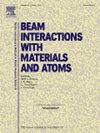Synthetic data generation from a fine particulate matter PM2.5 experimental data seed and its use in PMF and APCA
IF 1.4
3区 物理与天体物理
Q3 INSTRUMENTS & INSTRUMENTATION
Nuclear Instruments & Methods in Physics Research Section B-beam Interactions With Materials and Atoms
Pub Date : 2025-02-01
DOI:10.1016/j.nimb.2024.165599
引用次数: 0
Abstract
Synthetic databases produced using the Gaussian Copula Model, among others, represent a great aid to analysing experimental databases. Particularly, when the experimental databases have limited data density, synthetic databases can boost the data density without significantly altering the experimental data interpretation. In this work, experimental data of two years and 10 months of fine airborne particulate matter (PM 2.5), analysed by PIXE, ditto the total concentration and concentrations of 15 elements, were used as seed to feed the model and obtain synthetic data. An analytical study of both databases was conducted using Positive Matrix Factorisation (PMF) and Absolute Principal Component Analysis (APCA), which are the most common algorithms used by the community, some differences, acceptable limitations, and advantages are discussed in this document.
细颗粒物PM2.5实验数据种子合成数据及其在PMF和APCA中的应用
使用高斯Copula模型生成的合成数据库,对分析实验数据库有很大的帮助。特别是当实验数据库的数据密度有限时,合成数据库可以在不显著改变实验数据解释的情况下提高数据密度。本工作以两年零10个月的空气细颗粒物(PM 2.5)实验数据,以及15种元素的总浓度和浓度,通过PIXE分析作为种子,喂养模型并获得合成数据。本文对这两个数据库进行了分析研究,使用了社区中最常用的算法正矩阵分解(PMF)和绝对主成分分析(APCA),讨论了一些差异、可接受的局限性和优势。
本文章由计算机程序翻译,如有差异,请以英文原文为准。
求助全文
约1分钟内获得全文
求助全文
来源期刊
CiteScore
2.80
自引率
7.70%
发文量
231
审稿时长
1.9 months
期刊介绍:
Section B of Nuclear Instruments and Methods in Physics Research covers all aspects of the interaction of energetic beams with atoms, molecules and aggregate forms of matter. This includes ion beam analysis and ion beam modification of materials as well as basic data of importance for these studies. Topics of general interest include: atomic collisions in solids, particle channelling, all aspects of collision cascades, the modification of materials by energetic beams, ion implantation, irradiation - induced changes in materials, the physics and chemistry of beam interactions and the analysis of materials by all forms of energetic radiation. Modification by ion, laser and electron beams for the study of electronic materials, metals, ceramics, insulators, polymers and other important and new materials systems are included. Related studies, such as the application of ion beam analysis to biological, archaeological and geological samples as well as applications to solve problems in planetary science are also welcome. Energetic beams of interest include atomic and molecular ions, neutrons, positrons and muons, plasmas directed at surfaces, electron and photon beams, including laser treated surfaces and studies of solids by photon radiation from rotating anodes, synchrotrons, etc. In addition, the interaction between various forms of radiation and radiation-induced deposition processes are relevant.

 求助内容:
求助内容: 应助结果提醒方式:
应助结果提醒方式:


